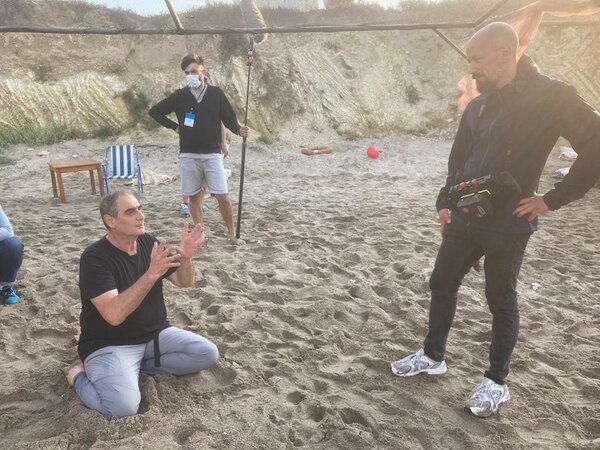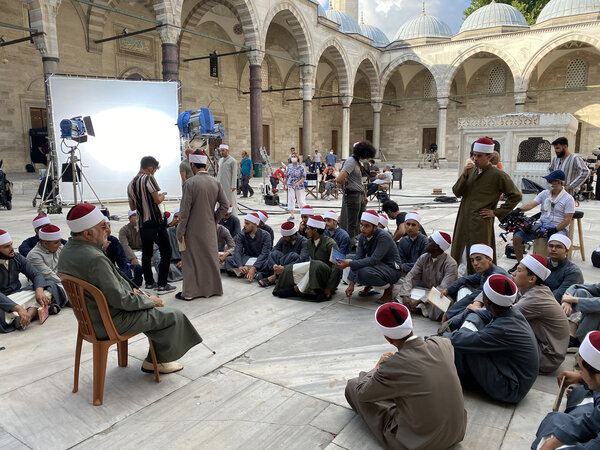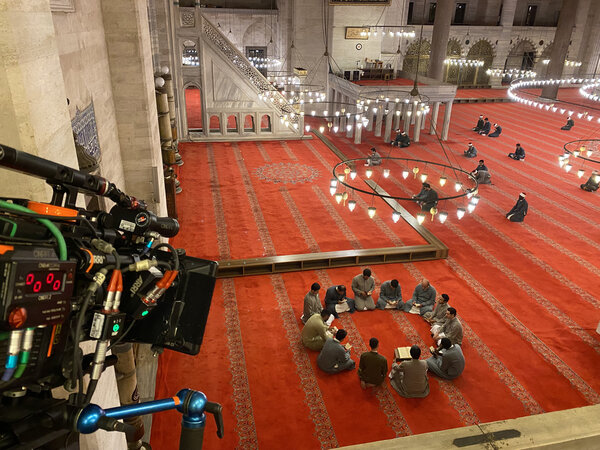Interview with Pierre Aïm, AFC, about "Boy from Heaven", by Tarik Saleh
Poor fishermen
Adam, the simple son of a fisherman, is admitted to the prestigious Al-Azhar University in Cairo, the epicenter of power in Sunni Islam. On the first day of school, the Grand Imam who leads the institution suddenly dies. Adam then unwittingly finds himself at the heart of a relentless power struggle between the country’s religious and political elites.
With Tawfeek Barhom, Fares Fares, Mehdi Dehbi, Mohammad Bakri.
For this co-production between Morocco, Sweden, Finland and France, filming took place almost exclusively in Turkey. After The Nile Hilton Incident, the director was no longer allowed to work in his country of origin, Egypt. It would have been especially impossible to shoot a film in Egypt that takes a critical position denouncing the immoral acts of the Imams and the police.
To draw his audience in, Tarik Saleh has chosen to recount this Machiavellian thriller using the codes of the genre as little as possible.

Pierre Aïm, the director of photography, therefore proposed less expressive lighting than on The Nile Hilton Incident. “The whole visual universe of the film had to be realistic so that the spectator believes the story could possibly be true. I didn’t need to make a pretty image, or to enhance the beauty of the men on screen (99% of the film is of men). The light is very often showering the characters, which is impossible when you want to make the faces beautiful. I didn’t try to erase the imperfections in the skin of the young hero (Tawfeek Barhom/Adam) to give him an even more youthful side. It also allowed me to incorporate a touch of film noir inspired by The Godfather.”

Boy from Heaven’s main setting, Al-Azhar University in Cairo, was shot in a huge mosque in Istanbul.
“In the courtyard of the mosque, for the night scenes, I had low ceiling clearance under the galleries. So, I added LEDs to each bar in both directions, aimed at the ceiling and left them in view in the wide shots. To give volume, a 10 kW Fresnel creates a backlight through the courtyard door”.
The interior of the mosque provided a sublime location with deep red carpets. “For the daytime sequences, two 18 kW HMIs and a 9 kW allow for clear daylight to shine in and reinforce the contrast and the volumes”, the cinematographer recalls.

Shot in the middle of Covid, it was necessary to bring in 300 extras who were used on around twenty shots for the singing competition scenes or at the start of the film when the first Imam dies and the crowd bows down.
Another fairly recurring decor was treated a little differently, with more sophisticated lighting. “The café where the cop (Fares Fares/Ibrahim) has his secret meetings at night is a setting where the light is more fictional. To dramatize the scenes, I underscored the color differences between the shots and the reverse shots, with SL1s distributed throughout the location.”
Other sets were very small, such as the dormitory, the prison, the police office. “All I changed on these locations were the existing tubes : I replaced them with Asteras. These tubes are very practical, very simple, and can be remotely controlled for color and intensity. And you can keep them in the frame !”
The minaret also serves as a meeting place for an entirely different purpose : to kill one of the undercover policemen. Pierre Aïm explains : “It’s the only location that isn’t entirely natural. Only two people could climb to the top of the real minaret, so we were able to film the two actors from below for wide shots. But in order to be able to film the complete sequence of the two characters in reverse shot, with the camera/sound team, a false minaret was built and placed on a roof. I recreated the light of the real minaret with 60 cm x 3 cm strips, very frequently used in the theater, placed around its circumference. The light is strong, and comes from below, reinforcing Fares Fares’ diabolical side. The backgrounds were shot from the actual minaret and were then added into the shots filmed in the recreated location later on.”
The film was almost entirely shot by hand, except for a few Steadicam shots, and this reinforces the film’s documentary side. You get dragged in by the camera’s constant movements, as it never leaves Adam, the young student caught in the trap. Boy from Heaven is also particular in that it was shot with only one focal length… Pierre remembers : “Tarik wanted to use only a single focal length and we chose the 40 mm from the Scorpio range (Vision service), it was like a challenge, a test… With the Alexa LF’s wide sensor, the depth of field is reduced and we did a lot of close-ups without the effect of the long focal length. Physically speaking, I was 50 cm on average away from the faces, often from a low angle. This choice to use only the 40 mm greatly influenced the way I directed the lighting.”
And Pierre Aïm concludes with a big smile : “My most recent project with Tarik Saleh confirms that the name cinematographer took on its full dimension once again, as he allowed me to make a contribution to this film.”
(Interview by Brigitte Barbier, for the AFC, translated from French by A. Baron-Raiffe)
 En
En Fr
Fr




